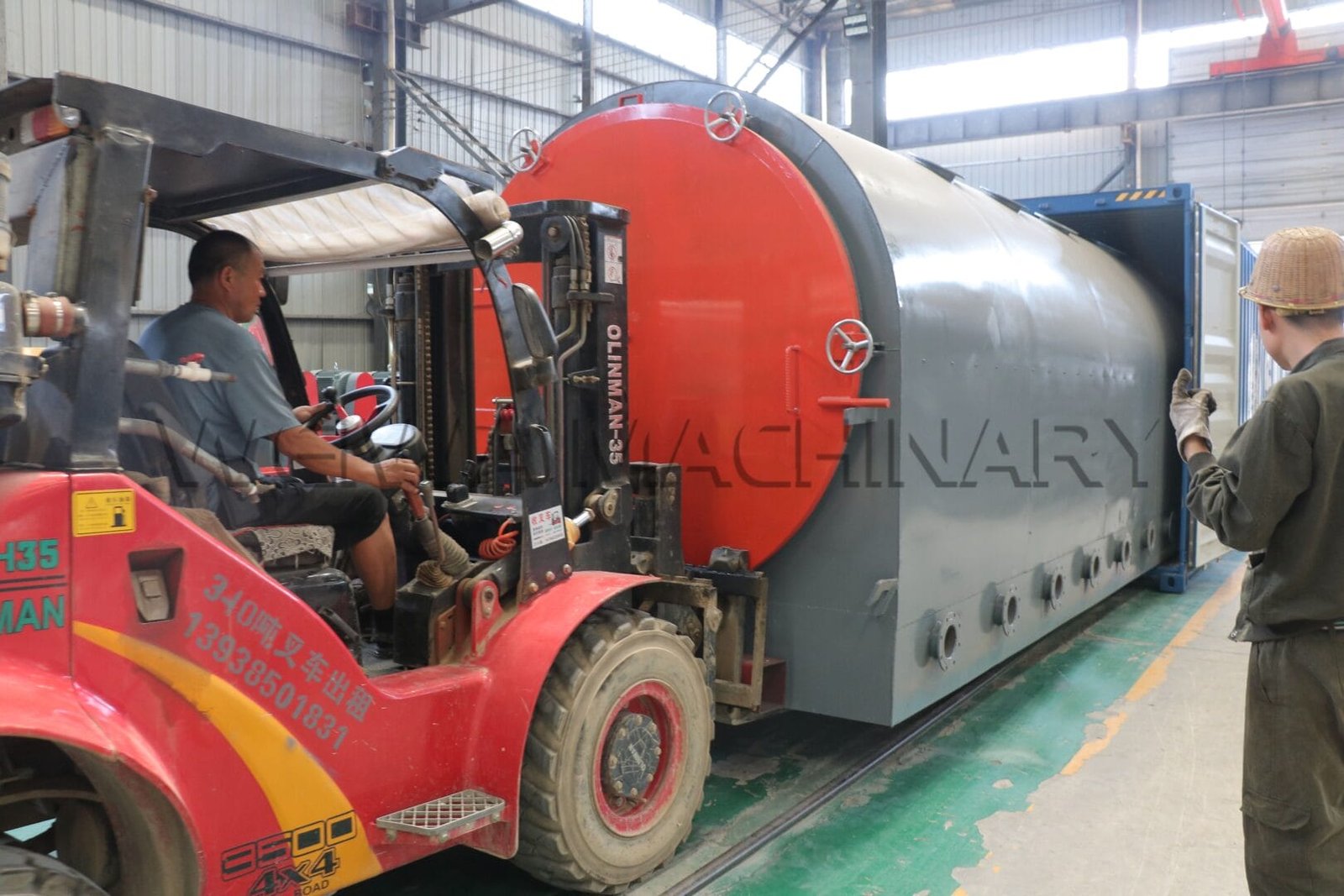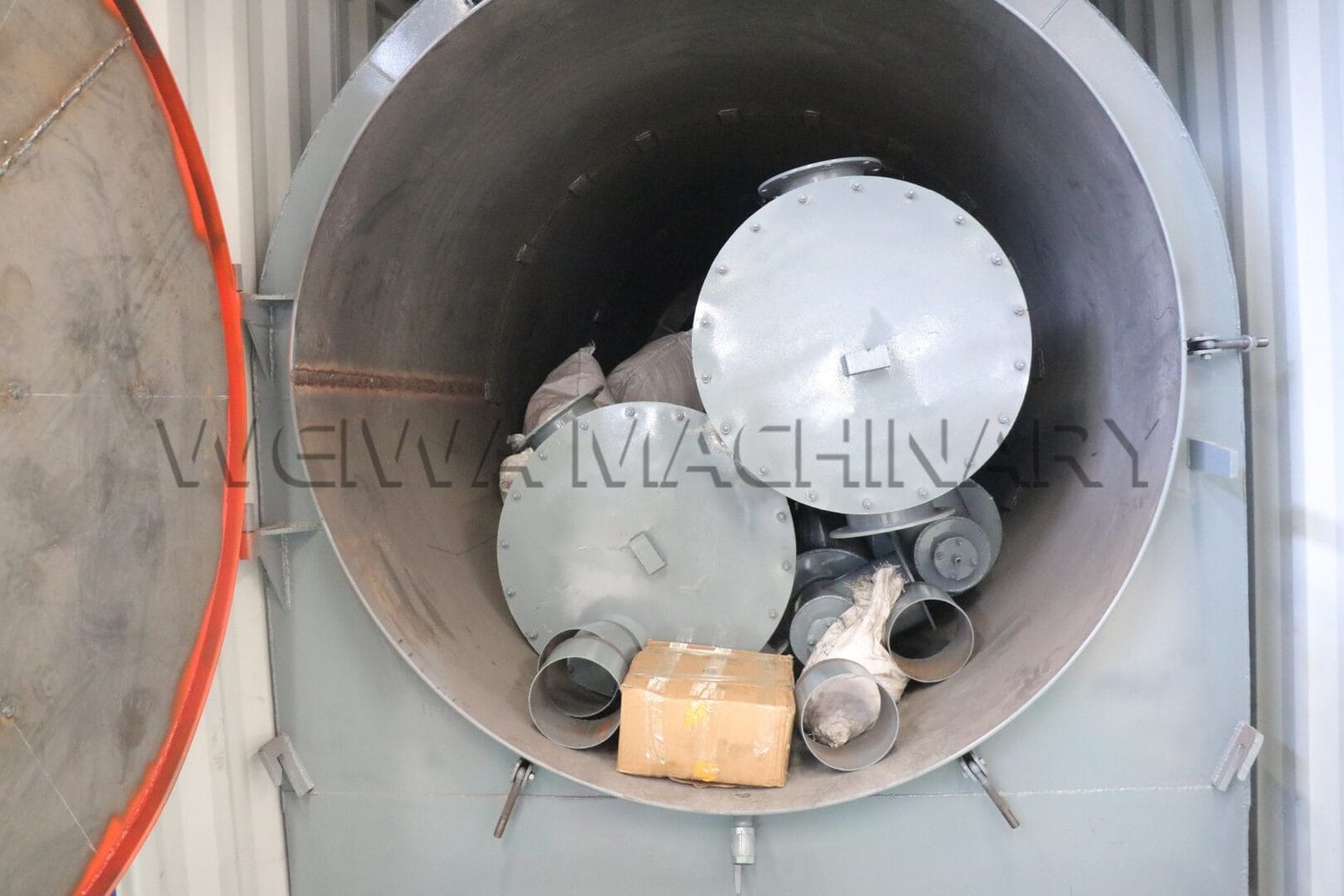Introducción
AWeiwa Machinery’s loading dock, un40-foot container is being carefully packed with a 10-ton horizontal de carbonización, destined for a biomass processing plant in Mumbai, India. This shipment represents more than just equipment—it’s a gateway to sustainable waste recycling in one of the world’s fastest-growing markets.
In this blog, we’ll:
Explore how horizontal carbonization furnaces work
Walk through the shipment process to India—packaging, logistics, and installation.
Analyze India’s market potential for carbonization technology.
What Is a Horizontal Carbonization Furnace?
The Science Behind the Machine
Unhorizontal de carbonización uses carbonización (heating in low-oxygen conditions) to convert organic waste (madera, cáscara de coco, cáscaras de arroz) into carbón, biochar, or fuel gas. Unlike vertical furnaces, the horizontal design allows:
- Mayor rendimiento (ideal for large-scale processing).
- More even heat distribution (better product consistency).
- Easier maintenance (accessible internal components).
Weiwa’s Innovations
Our furnaces feature:
Gas Recycling System – Reuses pyrolysis gases as fuel, cutting energy costs by 30%.
Modular Design – Ships disassembled for easier transport (critical for India’s infrastructure).
(Fun fact: The furnace being shipped to Mumbai can process 7 tons of coconut shells per day—enough to power a mid-sized charcoal briquette factory!)
The Journey to India
Paso 1: Secure Packaging
Disassembly – The furnace is split into modules (heating chamber, conveyor, gas filters).
Steel-Frame Crating – Each part is bolted into weatherproof wooden crates.
Anti-Corrosion Coating – Vital for India’s humid coastal regions.
Paso 2: Ocean Freight & Customs
Shipping Route – Typically 3–4 weeks from China to Mumbai’s Nhava Sheva port.
Documentation – We handle customs clearance and GST compliance.
Key Insight: India’s Make in India policy encourages biomass equipment imports by offering lower duties on eco-friendly machinery.
Paso 3: On-Site Assembly
Local Team Coordination – Weiwa’s engineers guide Indian technicians via:
- Assembly manuals
- Video calls for real-time troubleshooting.
- Test runs to optimize performance for local materials.
Why India Market Potential for Horizontal Carbonization Furnaces?
1. Biomass Waste
India generates 350 million tons of agricultural waste yearly (cáscaras de arroz, bagazo de caña de azúcar). Most is burned openly, causing air pollution. Unhorizontal de carbonización can:
✔ Convert waste to biochar (sold at 800/ton globally).
✔ Generate syngas for factory power, reducing reliance on coal.
2. Government Incentives
🇮🇳 National Policy on Biofuels – Subsidies for waste-to-energy projects.
Soil Health Mission – Promotes biochar as a fertilizer alternative.
3. Success Stories
- Tamil Nadu – A rice mill uses our furnace to turn husks into fuel briquettes, cutting disposal costs by 70%.
- Gujarat – A coconut processor now sells activated carbon to pharma companies.
(Data point: India’s charcoal market is projected to grow at 6.2% CAGR through 2030.)
Conclusión: The Future of Carbonization in India
As the Mumbai-bound furnace clears customs, it symbolizes a shift toward sustainable industry in India. Conabundant raw materials, government support, and Weiwa’s proven technology, the horizontal de carbonización is poised to transform India’s waste into wealth.
Ready to explore this market? Contact us for quotation
Tel/WhatsApp:+86 13838093177
Correo electrónico:info@cjlmachinegroup.com
Acerca de la maquinaria de Weiwa
Weiwa Machinery is a global leader in carbonization technology, with 200+ installations across 30 países. Nuestrohornos de carbonización horizontal are engineered for durabilidad, eficiencia, and easy deployment—making them ideal for India’s booming biomass sector.






 Veloz
Veloz

 +8613838093177
+8613838093177